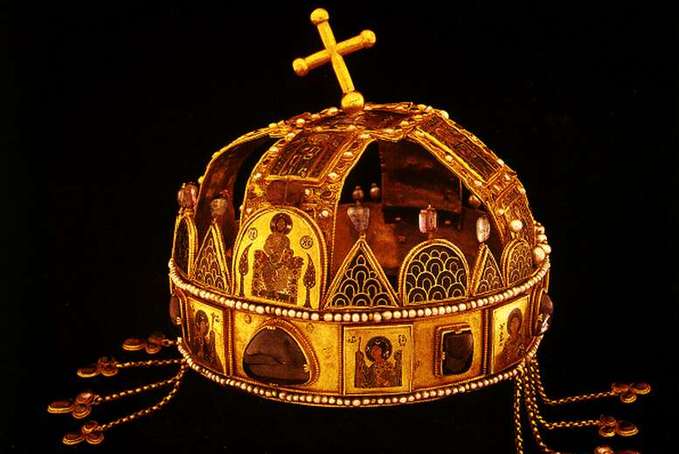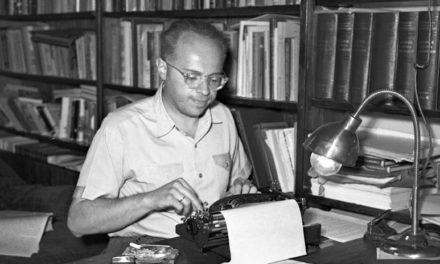According to the introduction of Article I of the 1946 Law on the State Form of Hungary, "On November 13, 1918, the exercise of royal power ceased in Hungary.
The nation regained its right to self-determination. After four hundred years of struggle, the Ónod Assembly, the Debrecen Resolution of 1849, two attempted revolutions and the subsequent repression, the Hungarian people can once again freely decide on their form of government. The National Assembly, elected on the basis of universal, equal, direct and secret suffrage, is now creating, in the name and on behalf of the Hungarian people, the form of government that best suits the will and interests of the nation: the Hungarian Republic. It ensures natural and inalienable human rights for the citizens of the republic, and orderly coexistence and peaceful cooperation with other peoples for the Hungarian people."
Almost none of this was true. It was not true that the Hungarian people decided on the form of government, because it was decided by a national assembly that, after excluding millions of people from the right to vote, gave in with the strong influence and pressure of the occupying great powers, the ruthless political pressure of the Communist Party and the support of the majority small farmers' party, which was forced to nod. the force of circumstances. All this happened with the intention of interrupting historical continuity, with false references to misinterpreted historical antecedents. The promise of freedom was not true either, the law did not fulfill the expectation that basic freedoms would be adequately protected, on the contrary, the republic became a false point of reference for the further gradual mutilation of disabled freedoms and the political process that eventually led to communist autocracy
In 1978, for the 40th anniversary of his homecoming, the historical magazine Rubicon published a representative issue titled Homecomings of the Holy Crown from 1205 to 1978. In it we read the republican episode of the Holy Crown in exile about the dethroned Holy Crown.
"Already in 1945, the Holy Crown mostly appeared only as "crown" or "Hungarian crown" in the majority of state and left-wing sources.
At the end of June 1945, the first - uncertain - news arrived that the Hungarian coronation badges had been found in Austria. Although the control of the country was firmly in the hands of the Soviet Workers' and Peasants' Red Army, left-wing publicists expressed the fear that the Holy Crown would not merely be the instrument for the return of the Horthy regime, but the Arrow Cross regime. The fact that in the fall of 1944 Szálasi took the oath of national leadership on the Holy Crown played a decisive role in this. But in addition, the doctrine of the Holy Crown developed during the Horthy era , which was formed in March 1946 by the parties of the Left Block (Hungarian Communist Party, Social Democratic Party, National Peasant Party) was branded as a reactionary ideology and anti-democratic.
A repeatedly recurring motif in the entire post-1945 mentality was the voicing of the fact that from 1930 onwards, all judicial sentences began with: "In the name of the Hungarian Holy Crown!" Because of all this, even the mention of the Holy Crown is "feudal, Horthy-fascist, arrow-headed, legitimist" etc. had an effect equivalent to markers.
February 1, 1946 brought the end of the Hungarian monarchy, after the republic was proclaimed for the second time in the country's history. (It should be noted that the so-called First Hungarian Republic of 1918 was actually called the Hungarian People's Republic - it appeared in this form in all official documents, and even those who used the name of the republic were corrected several times.) By definition, the issue of the crown in the period around the proclamation of the republic came to the fore.
Fierce debates took place in the National Assembly in connection with the change in the form of government. The bill supporting the introduction of the republican form of government was presented by Dezső Sulyok in the National Assembly on January 30, 1946. The next day Margit Slachta , leader of the Christian Women's Camp, stated that the law on the introduction of the republic does not mention the Holy Crown. Slachta, representing the Hungarian legitimism argument, argued that "the doctrine of the Holy Crown is not a fiction, it is a very big mistake to say so... The Holy Crown, in this view, constantly exhorts the two bearers of power, the nation and the king, to the rule of law." The representative also correctly recognized that if the coronation badges return to Hungary, "then measures will be taken on what should happen to the Holy Crown, and it may be decided to put it in the museum. The dethroned Holy Crown will be a dead crown, not a living personality, as it is now, when it is a living symbol and a living source of law. It will be like a dear dead person, whom we put in the coffin and know that only his corpse is here."
His speech was accompanied by loud shouts from the representatives of the governing parties, including from the small farmers. Among other things, it was said that "the country is not the crown, but the country of the Hungarian people and Kossuth", "the people are the source of law, not the crown", or "historical tradition is the throne of the Doge for us". As Népszava put it: "The bill on the protection of the republic and democracy triggered the domestic political crisis. Open religion has arrived. ,The democratic majority of the National Assembly and the movement of the working classes decided the issue - but the simple fact also became clear that those who mentioned the "Hungarian holy crown" so many times recently - are the enemies of the republic and democracy , their main goal is to hang the legal basis for the protection of the existing form of government. "
In other words: the Holy Crown, as well as the Hungarian historical constitution symbolically based on it, in the II. It emerged as one of the main enemies of the Republic of Hungary - of course mainly as a result of the politicization of the MKP" For the Tildy government, the form of government of Hungary and the declaration of the republic were of outstanding importance to the Tildy government from the point of view of the peace negotiations. So there was a strong desire to conform to the West, as can be observed several times throughout Hungarian history.
Hungarian politicians lulled themselves into an illusion when they believed that democratic institutions mattered. During the Soviet occupation, this could only have been a window measure for the construction of a Soviet-style dictatorship. But this policy did not lead to results: the Paris Peace Treaty of February 10, 1947, which ended the Second World War, did not take into account Hungary's needs and characteristics. The Soviet occupiers dictated in all areas. With the exception of Margit Schlachta, the representatives voted unanimously in favor of the republic form of government. Schlachta was pro-royalty, he emphasized that the Kingdom of Hungary was based on religion. He cited the admonitions of St. Stephen and then the justification of one of Maria Theresa's laws. Listed II. József took measures to alleviate the fate of the serfs, but then János Erős, an independent smallholder representative, shouted: "After four hundred years of Habsburg rule, you can't do Habsburg propaganda!"
Alongside Margit Schlachta Sándor Eckhart criticized the proposal, arguing that the National Assembly does not have the right to proclaim the republic, and the people should be asked about it.
György Parragi, an independent representative from the Small Farmers' Party, emphasized: they want a strong democracy that can deal with its enemies. This statement did not promise too much good, it was precisely the slogan of the defense of the republic that was then used by the emerging communist system to eliminate its political opponents. István Kossa announced that Hungary's form of government had become a republic, which was received by the representatives with enthusiastic cheers and applause.
The refusal of communion with the Holy Crown was a rejection not only of the Hungarian historical constitution, but also of Hungarian history itself, one of the essential reference bases of all Hungarian constitutional powers. However, no legitimate power can exist - not even a republic - with the refusal of the Holy Crown, such a political system is doomed to failure on a historical scale. Hungarian history between 1944-1989 also proves this historical experience in recent times.
Zsolt Zétényi













